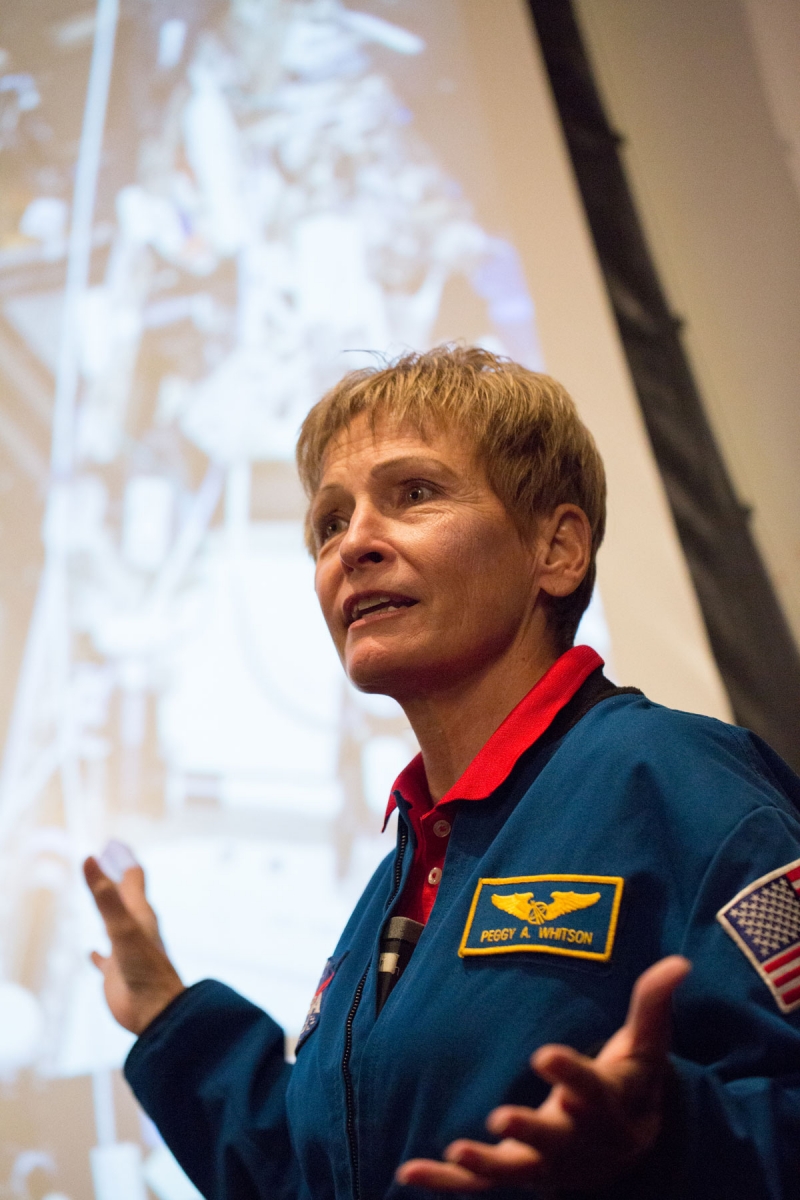Extreme Engineering: NASA Astronaut Peggy Whitson, the Longest-Serving American in Space
They were 250 miles above Earth, recalled International Space Station (ISS) commander Peggy Whitson, when two of her crewmates sounded the alarm. Out on a spacewalk to install new solar arrays, the pair discovered a two-and-a-half-foot tear in the station’s new photovoltaic sheeting. Knowing the rip could easily expand and destroy a key power source, Whitson proceeded to get creative.

“We didn’t have a Home Depot we could go to,” the NASA astronaut quipped, recalling the 2007 incident February 22 at this year’s first Extreme Engineering talk.
Scrounging for materials and consulting with mission control, Whitson and colleagues fashioned contraptions they called “cufflinks” out of spare wire and tape. Ultimately, one astronaut embarked on a daring and unprecedented mission, knitting the sheeting back together over seven painstaking hours while dangling from a 50-foot boom connected to a robotic arm. Over a decade later, the array is still in operation.
It was just another day on the job for Whitson—a historic 665 of which she has spent in space, more than any other American astronaut or woman of any nationality, over the course of three long-duration space flights since 2002. She is the first woman to command the ISS, doing so on two separate expeditions, and the first woman to perform 10 spacewalks, totaling more than 60 hours. Last September, she returned to Earth after spending a record-breaking 289 consecutive days in space, the most in NASA history. She still misses the view.
“You never get tired of looking at our planet,” said Whitson, who is featured on the cover of the latest National Geographic. “It’s awe-inspiring every time.”
Whitson, who belonged to the same astronaut class as Professor Mike Massimino, began her career at NASA in space medicine and biology, which proved ideal experience for the wide range of scientific research she has conducted and overseen while in orbit. In microgravity, she explained, every wall of the station’s interior can be a lab, while the exterior is also covered in active experiments.
But prolonged periods living in microgravity has profound effects on the human body as well. The callouses on the bottom of feet begin to disappear, she described, replaced by new ones on top of the feet where astronauts snag anchors to help stay in place, and vision eventually begins to deteriorate or distort. Returning to Earth is always a rude shock.
“Gravity sucks,” she said.
Whitson was introduced by her NASA classmate Mike Massimino, Professor of Professional Practice in Mechanical Engineering and a veteran of two space shuttle flights to the Hubble Space Telescope, and presented a commemorative t-shirt by members of the Columbia Space Initiative. The following day, she joined Dean Mary C. Boyce and members of Columbia’s Society of Women Engineers for a special lunch.
